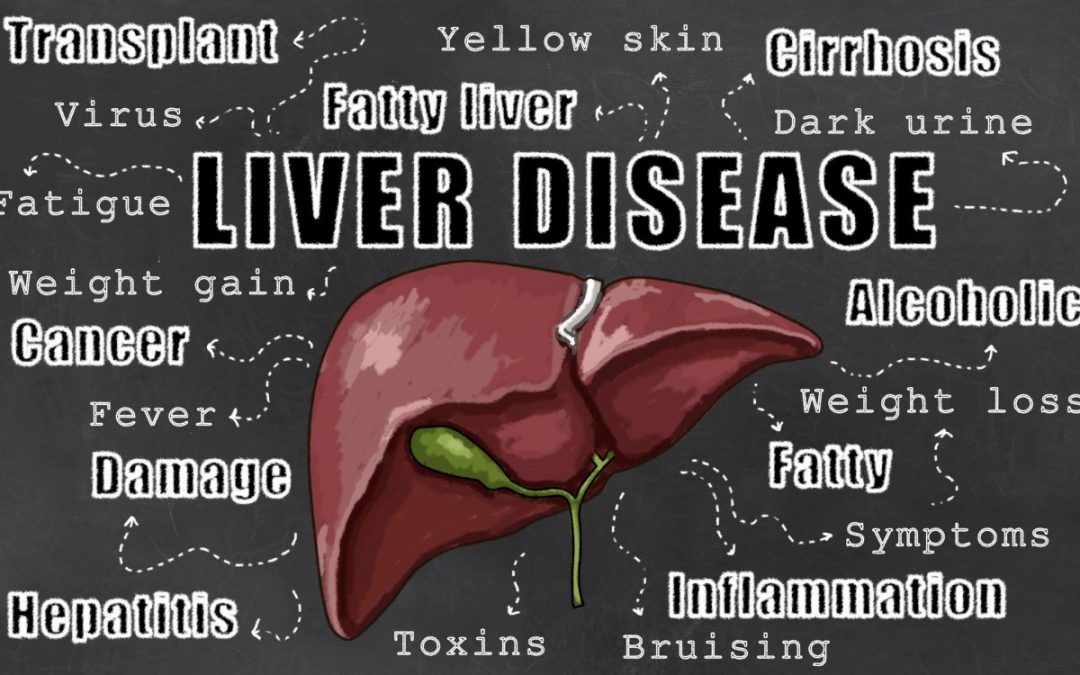80-100 million people in the United States have a fatty liver.
A fatty liver usually has no symptoms, so diagnosis often occurs by accident when an imaging study (such as an abdominal ultrasound, CT scan, or MRI) is requested for another reason. A fatty liver may also be identified on an imaging test as a part of investigating abnormal liver blood tests.
There are 2 types of fatty liver disease:
- When fatty liver develops in someone who drinks a lot of alcohol, it is known as Alcoholic Fatty Liver Disease (AFLD)
- In someone who doesn’t drink a lot of alcohol, it is known as Non-Alcoholic Fatty Liver Disease (NAFLD). Non-Alcoholic Fatty Liver Disease affects up to 25-30% of people in the United States and Europe.
Fatty liver happens when too much fat builds up in your liver. Although it is normal to have a tiny amount of fat in these cells, the liver is considered fatty if more than 5% of it is fat.
Remember, your liver is the second largest organ in your body. It helps process nutrients from food and beverages and filters harmful substances from your blood. Too much fat in your liver can cause inflammation and create scarring, and in severe cases, this can lead to liver failure.
The exact causes of Non-Alcoholic Fatty Liver Disease aren’t well understood but there does appear to be a connection between the disease and insulin resistance.
Insulin is a hormone. When your muscles and tissues need glucose (or sugar) for energy, insulin helps unlock the cells to take in and burn the glucose from your blood. Insulin also helps your liver in the storage of excess glucose.
When your body develops insulin resistance, it means your cells don’t respond to insulin the way that they should. As a result, too much fat ends up in the liver which leads to inflammation and liver scarring.
Risk factors for Non-Alcoholic Fatty Liver Disease
Risk factors for Non-Alcoholic Fatty Liver Disease include:
– Diabetes (insulin resistance)
– High cholesterol levels
– High triglycerides
– Use of corticosteroids
– Pregnancy
– Non-optimum diet
– Limited physical activity
– Excess weight, particularly weight around the stomach.
Ways to Improve a Fatty Liver
Here are some tips to improve a fatty liver naturally:
- SAFELY LOSE WEIGHT
The best way to lose weight is to reduce weight slowly and keep the weight off.
a. Eat a balanced, healthy diet
Remove as many processed foods from your diet as possible, especially calorie-dense ones like desserts, chips, fried foods, pizza, processed meats, frozen meals.
Replace these foods with more whole grains and vegetables. Try eating mostly things that are one or two ingredients and free of added sugar, preservatives, fat and flavors. A little fruit is great, but don’t overdo it, and favor fruit such as blueberries, raspberries and strawberries.
b. Reduce sugar beverage consumption
Sugar sweetened beverages like soda and energy drinks are high in fructose, which has been shown to drive liver fat accumulation in children and adults.
- INCREASE YOUR PHYSICAL ACTIVITY
Exercise will help support weight loss and improvement in liver health.
Suggested exercise is:
- Low-intensity cardio workouts such as walking, cycling, jogging, recreational sports, or swimming
- Strength training exercises such as weightlifting (fewer reps with lighter weights).
If you are not doing a lot of physical activity now, then start slowly and build up your time spent exercising. Aim to build up to exercising for 30 minutes at least 5 days per week.
- LOWER YOUR TRIGLYCERIDES THROUGH DIET AND EXERCISE
Triglycerides are a type of fat (lipid) found in your blood. When you eat, your body converts any calories it doesn’t need to use right away into triglycerides and this can cause a build up of fat in the liver. Improving one’s diet and doing more exercise can lower triglycerides.
- AVOID ALCOHOL
Your liver breaks down most of the alcohol you drink, so it can be removed from your body. But the process of breaking it down can generate harmful substances. These substances can damage liver cells, promote inflammation, and weaken your body’s natural defenses. The more alcohol that you drink, the more you damage your liver. Alcoholic fatty liver disease is the earliest stage of alcohol-related liver disease. The next stages are alcoholic hepatitis and cirrhosis.
- CONTROL INSULIN RESISTANCE AND DIABETES
Improvements in diet and increased physical activity will support your metabolism and help reduce insulin resistance. This will result in less accumulated fat in the liver.
For extra help, there’s are natural supplements that can help provide your body with the comprehensive nutrition it needs to correct your metabolism and lower insulin resistance.

